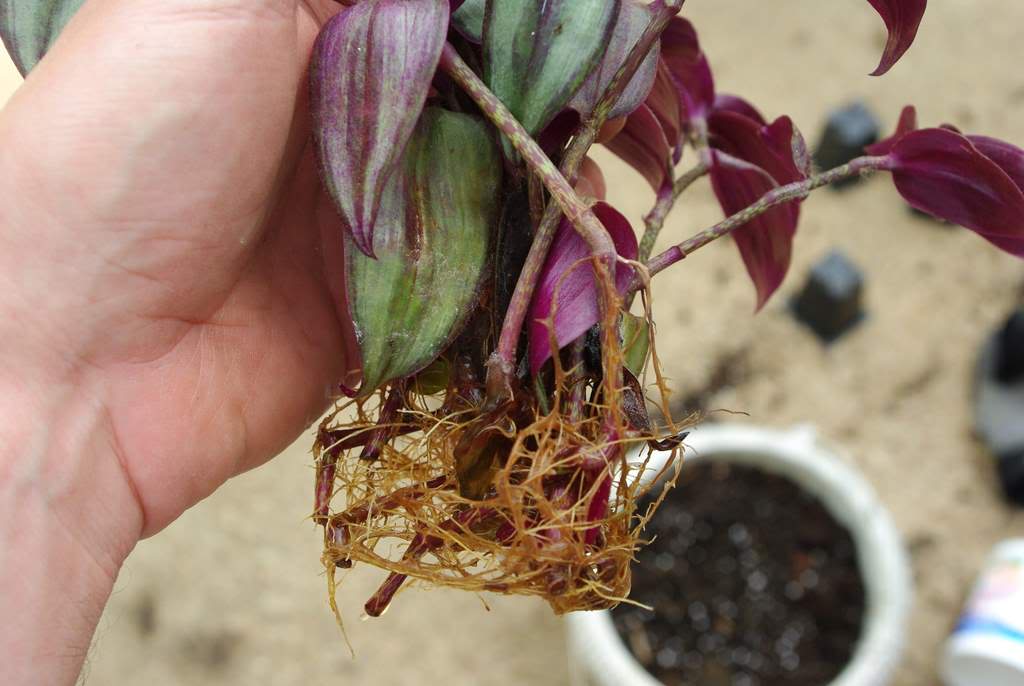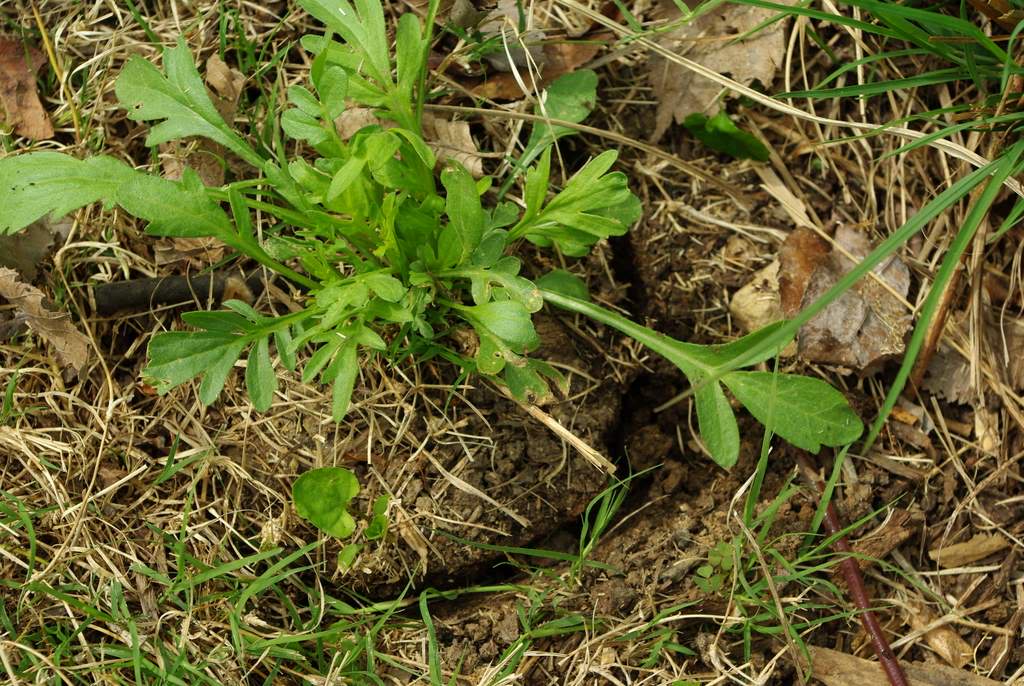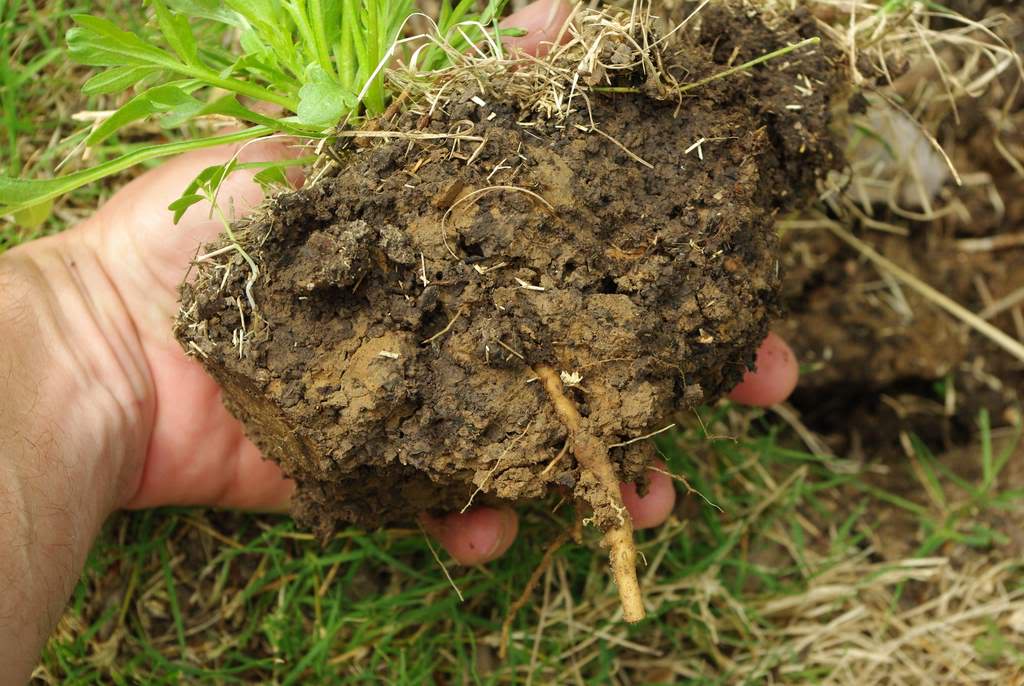Do a little planting
>> Friday, April 23, 2010 –
planting,
ratibida,
transplant
I decided to plant something at lunchtime today. I've been overwintering Tradescantia zebrina cuttings inside, and from two cuttings I've produced dozens of plants. They're taking over my plant table in the basement, so time to get some outside!
That's what they look like after Winter. A plant doesn't get much deader than that.
This is what they look like right now:
So first step is to get the old potting mix out. Carefully though, because these pots are a couple of years old and the UV light in the sunlight makes them brittle.
Oops. Anyway, just arrange them in the pot...
add more soil, and that's one done. These are tough, vigorous plants, so I'm not worried about planting them perfectly or doing anything "wrong". By the end of the summer this pot will be a beautiful mass of trailing purple, green, and silver foliage and you won't even be able to see the pot.
The next are just cuttings rooted in water:
They've been in the water for too long. See how the roots are brown? Ideally they should be white and fresh-looking, which was about a month ago. As I said, these are tough plants, and I'm not worried.
Nothing fancy here, except I'm going to use an old garden staple and twist tie (can't find another staple right now) to hold a couple of the stems in contact with the soil so they'll root:
I said to be careful hanging the pots because they're brittle, didn't I?
Next up is some Ratibida columnifera which is a perennial I planted a few years ago and has reseeded nicely. In fact, it has reseeded a bit too much:
All of those little plants are new Ratibida seedlings. I'll have to thin them out a lot. Here's one that is growing right at the edge of the bed, and needs to be moved:
It's a simple thing to cut around the plant with a trowel:
then pop it out. I forgot that Ratibida has a taproot -- which means that it has a thick main root (like a carrot, but not as fat) instead of a lot of smaller roots. Here's the taproot coming out of the bottom of the soil clump:
Plants with taproots are a little harder to transplant, but since this one is still pretty small I'm hoping it will survive. Since I want to preserve as many roots as possible, I'll soak this heavy clay soil in a bucket of water to loosen it:
then the soil falls off leaving the bare root with hopefully a minimal amount of damage to the smaller roots.
I don't see a lot of smaller roots, so I hope this does ok. I'll pot it up, water it, and put it in a mostly shady spot right now, moving it to more sun over a few days.
You might be wondering why I removed all of the soil before I potted it up. Good question, especially since I may have broken off a lot of little roots in the process. The reason is that the soil in that bed is really heavy clay -- as it is in most of my yard. If you put that soil in a pot you'll have a hard, dry lump in no time at all. Heavy garden soil in pots compacts very quickly, and most plants will struggle in that. Using a loose potting mix allows the roots to grow easily, resulting in a healthier plant. I think. It feels right to do, so that's what I do.
There were other Ratibida plants over there that I wanted to dig up, but I think I'll watch this one for a few days before I dig the rest. I'd rather have a live plant in a non-ideal spot than a dead plant in a pot!



















